If you’ve recently purchased a static caravan or you’re considering dipping your toes into the world of static caravan ownership, then there’s a lot for you to consider. It’s a huge investment, so you’ll want to be 100% sure that you’re going into it with all of the relevant knowledge and information at hand. That’s why we’ve put together this handy guide to static caravan ownership to help beginners ensure they can make the most of their caravan. This includes offering tips on everything from maintenance and winterisation, to getting to know your neighbours and choosing the right park.
1. Make sure you choose the right park
Choosing the right caravan park is just as important as picking the right caravan. After all, the park can make or break your holiday experience. So, before you commit, it's worth taking the time to visit a few and get a feel for the place. Here’s what you should think about when choosing your perfect park.
What attractions are nearby?
Are you into outdoor adventures? Maybe a park near a National Park or a stunning stretch of coast is your ideal spot. Or, if you’d rather be able to head out for a meal or a drink at the pub, you might want a park that's close to a town or city with good restaurants and shops.
What facilities do you need?
Caravan parks vary a lot, so think about what’s important to you. If you’re after activities and entertainment, look for parks with a lively atmosphere, maybe even an on-site restaurant or bar. Some parks offer a wide range of events and social spaces, while others are much quieter.
How far are you willing to travel?
Some people love the idea of taking long trips to explore new places, while others prefer a park closer to home for shorter, more frequent breaks. When deciding on distance, also consider your transport options. If you’re driving, you’ve got plenty of flexibility, but if you plan to use public transport, look for a park that’s well-served by buses or trains.
Are you bringing your dog?
If your dog is coming along, make sure the park is pet-friendly and has plenty of scenic walks nearby. It’s also worth checking if the park has designated dog areas, like a dog park or specific walking trails.
Do you have special requirements?
If you or someone in your group has mobility challenges, make sure the park is fully accessible. Some parks are better equipped for people with disabilities, so it’s essential to check things like wheelchair access, ramps, and adapted facilities.
What’s the atmosphere like?
If you’re looking for a quiet retreat, take note of the park’s atmosphere. Visit during the day to see how busy it is and how much noise there is. If you’re seeking peace and tranquillity, it’s important to ensure the park doesn’t get too crowded.
Who will be visiting?
Are you bringing kids or family members, or will you be letting others stay in your caravan? If so, you’ll want to pick a park that caters to all of their needs too. If kids will be visiting, then you should look for child-friendly facilities like playgrounds, safe areas for cycling, or family activities.
Don’t forget to visit before you decide!
Even if you’ve done all your research online and think you’ve found the perfect park, visiting in person is a must. Seeing the place for yourself will give you a better feel for the environment and the facilities available. Many parks offer tours for potential buyers, where you can ask questions and get a real sense of what’s on offer before you make a commitment.
2. Do your research when insuring your static caravan
While it’s not legally required to insure your holiday home, most caravan parks will ask you to have insurance, and they’re within their rights to do so. Getting your caravan properly insured is really important for your peace of mind and to protect your investment. But with so many options out there, it’s key to understand what’s included in your policy so it fits your needs - and doesn’t leave you underinsured just to save a bit of cash.
What type of cover do you need?
The first thing to figure out is the type of cover you need. There are usually two main options for static caravans: New for old and market value. New for old means if your caravan is a write-off, you’ll get enough to replace it with a brand new model. Market value, on the other hand, is based on how much your caravan is worth right now, so it takes depreciation into account. Think about whether you want the full replacement value or a more affordable option that reflects the current worth of your caravan.
What’s not covered?
Make sure to check the exclusions in your policy. Common ones include damage from vermin, accidental damage, or flooding, so it’s important to know if these are covered or if you need to add extra protection. Also, pay attention to any rules around un-occupancy. Some policies won’t cover things like theft or damage if the caravan is left unoccupied for a long time.
Public liability
Public liability insurance is a must. It protects you if someone gets injured or their property gets damaged because of your caravan. If your neighbour slips on your decking and sues, this cover will help with legal costs and compensation. Look for a policy that offers at least £2 million in cover - this is the usual minimum.
Extra costs to think about
Some policies include coverage for things like debris removal, re-siting your caravan, or reconnecting services after damage. Others might charge extra for this, so it’s worth checking what’s included in your policy and what isn’t.
3. Make sure you preparing your static caravan for winter
Whether your park shuts down or you’re just taking a break, properly winterising your caravan will save you from nasty surprises when you return. Here are some steps that you may wish to follow to prepare your static caravan for the colder months.
Clean and empty your caravan
First things first - give your caravan a good deep clean and remove any food or drink to avoid any nasty smells or mould. You should then vacuum carpets, curtains, and upholstery to keep everything dry. A clean caravan means fewer problems when you come back!
Drain down the water system
To prevent pipes from freezing and bursting you should drain down your water system. To do this, open all the taps, flush the toilet, and remove the showerhead. Then, add antifreeze to the system, and turn off the water supply at the stopcock. This will help avoid water damage and a big mess when you return.
Disconnect the gas and electricity
If you use piped gas, turn it off at the mains. If you have bottled gas, disconnect the bottles and store them safely indoors. Then, switch off all electrical appliances and turn off the power at the mains. This will prevent any potential hazards while you’re away.
Prevent damp and mould
Mould loves damp, so it’s important to keep moisture at bay. A simple trick is to place containers of salt around the caravan - it absorbs moisture and helps keep things dry. Make sure to leave cupboard doors and drawers open, so air can circulate. You can even leave internal doors open for good measure.
Seal gaps and prevent pests
Check for any cracks, gaps, or holes where pests like mice or insects might sneak in. Cover plugholes and ensure toilet lids are down. It’s a simple step that makes a big difference in keeping your caravan safe from uninvited guests.
Protect the exterior
Don’t forget the outside of your caravan! Clean the gutters to avoid blockages and store away any outdoor furniture. Check the seals and any cracks on the exterior to make sure water doesn’t get in. A little TLC on the outside will go a long way.
4. Add homely touches to your static caravan
With just a few simple changes, you can turn your static caravan into a cosy, welcoming space that feels like home! One of the easiest ways to make the space feel homier is by adding soft furnishings. Think cushions, throws, and rugs. They not only make things look more inviting, but they also add comfort, so you’ll feel instantly relaxed. Another great trick is personalising the space. Adding a few family photos, your favourite artwork, or little mementos from past trips makes the place feel more familiar and, well, yours. It’s amazing how much warmth a few framed memories can add to a room. Lighting plays a big role, too. Instead of relying on harsh overhead lights, try some table lamps, fairy lights, or even LED candles. Warm, soft lighting creates a relaxed atmosphere, perfect for winding down after a busy day. Don’t forget the bedding, either. A comfy bed is key to feeling at home. Fresh sheets, a cosy duvet, and some decorative pillows can make your bedroom feel way more inviting. Finally, bringing a bit of nature inside with plants can really brighten up the space. Even just a couple of small, easy-care plants like succulents can make a big difference, giving the place a fresh, lived-in feel. With these little touches, your caravan can go from feeling like just a temporary spot to somewhere you can truly relax and unwind, making it a home away from home.
5. Stocking up your static caravan
Before you head off for a stay in your caravan, you’ll want to ensure it’s nicely stocked up with essentials. That way, you don’t have to worry about forgetting things or packing the same stuff over and over. Start by adding some personal touches, like towels, shower mats, toothbrush holders, toilet brushes, and shower shelves. These little things can really help make your caravan feel more like home. In the kitchen, make sure you’ve got all the basics - utensils like spatulas, wooden spoons, and tongs are a must, especially if you’re planning to throw a BBQ. Also, having some pots, pans, glasses, and plates already in the caravan will save you from packing them each time. And don’t forget extras like toilet roll, kitchen roll, cling film, and tin foil - you’ll be glad to have them ready when you arrive, so you don’t have to rush to the shop. When it comes to food, stock up on non-perishable items like pasta, rice, canned goods, and snacks. You may also want to make sure you’ve got some tea bags and biscuits for when you arrive. There’s nothing better than dropping your bags off and enjoying a good cuppa as you settle in for your stay! For entertainment, bring along some board games, books, or DVDs for rainy days. If you’re planning to spend time outside, throw in some foldaway beach chairs and an umbrella for comfort. And don’t forget to pack clothes for all types of weather - wellies and macs for the rain, plus swimsuits and shorts for the sun. Other items like sun cream and a first aid kit are also very important.
6. Explore the area
A static caravan can become a second home for some people. You’re not just passing through - you’ve got the luxury of time to soak in your surroundings over a number of visits. That means you can head out to nearby towns, villages, and other hidden spots that you might not get to experience during a short visit. There’s something magical about living like a local and wandering off the beaten track, whether you’re discovering a quiet woodland walk nearby, a tucked-away village pub that only the locals know about, or finding a secret beach you’d never see in a guidebook. If you’re staying in a rented caravan, you might feel the need to rush about and see and do as much as possible. However, as a static caravan owner, you know you’ll be visiting time and time again. This means you don’t have to rush through it all. You can take your time to really appreciate the little things. And if you don’t get to everything in one trip? No problem - just return on your next visit! Over time you’ll find your favourite spots, making the area feel a lot more like home.
7. Get to know your neighbours
As you’re in for the long haul, it really is worth making an effort to get to know the people around you at the caravan park. Most static caravan parks are pretty friendly places with a real community atmosphere, so take a moment when you arrive to say hello and introduce yourself. Not only is it nice to have some new faces to chat to, but it’s also good for peace of mind. Having a few people around who you can trust and who’ll keep an eye on things when you’re not there adds an extra layer of security. It’s always reassuring to know someone’s got your back, whether it’s checking on your caravan or just giving you a heads-up if something’s not quite right. Plus, getting to know your neighbours makes the whole experience more enjoyable. You might end up sharing tips on local spots, swapping stories, or even planning a BBQ or two.
8. Maintaining your static caravan
Regular maintenance is key to keeping your static caravan in good shape. To keep things in top condition, start by cleaning the exterior during each visit. This helps prevent debris or leaves from blocking drainage, damaging the roof, or interfering with filters and windows. Make sure to air the caravan out too. Open the doors and windows for a few hours to help prevent condensation and mould build up. At the end of your stay, don’t forget to close your air vents. While some owners leave them open in warmer months to reduce damp, it’s important to clean them annually and trim back any plants that might block airflow. Check with your park about their gas and electricity policies and make sure these are inspected yearly. Also, service your boiler every three years for peace of mind. Don’t neglect your chassis - especially if you're on a coastal site where rust can be an issue. Check for signs of corrosion, and if the protective paint has worn off, sand it down and repaint. While you’re at it, oil the jockey wheel and jack stands, and inspect your tyres, adjusting the pressure if needed!
Conclusion
So there you have it. We hope you’ve found our list of tips useful. If you’re interested in buying a static caravan, we’re proud to offer a wide selection of top-quality new and used static caravans across South and West Wales. Whether you're after a cosy lodge for a relaxing getaway or a spacious eight-berth caravan to accommodate the whole family, we’ve got something to suit your needs.

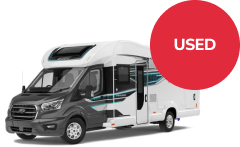
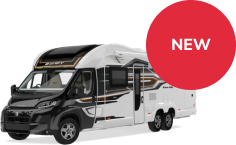

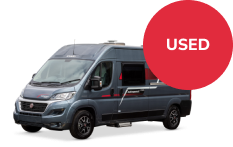


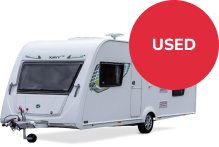
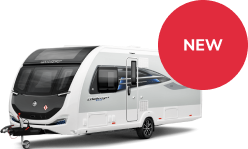



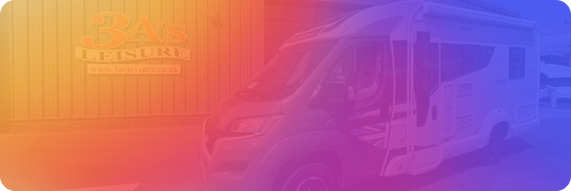
 Spidersnet
Spidersnet